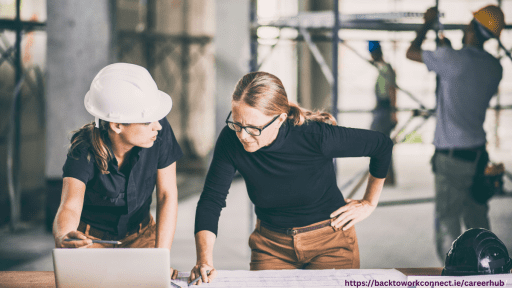Construction companies face several challenges in achieving a gender-balanced workforce. These challenges are deeply rooted in both industry culture and structural barriers. Here are the key issues:
Cultural and Stereotypical Perceptions
Construction has historically been a male-dominated industry, which fosters a culture that may seem unwelcoming to women. There is also a persistent belief that construction work, especially fieldwork, is too physically demanding for women. These stereotypes deter many women from entering or staying in the sector.
A lack of inclusivity, such as inappropriate behavior, language, or lack of support, can make it harder for women to feel comfortable or supported on job sites. Improving workplace culture can significantly improve the retention of females in the industry.
Lack of Role Models and Mentors
The scarcity of women in leadership positions means there are fewer role models or mentors for aspiring female professionals. Men often dominate professional networks and informal relationships, making it difficult for women to gain visibility and opportunities for advancement.
Work-Life Balance and Flexibility Issues
he construction industry often requires long hours and a lack of flexibility, which can disproportionately affect women, especially those with caregiving responsibilities. Many construction companies may lack adequate policies supporting maternity leave, parental leave, or flexible working arrangements, further discouraging women from joining or staying in the industry.
Educational Barriers
Fewer women pursue careers in engineering, construction management, and other relevant fields, leading to a smaller talent pool. Many girls are not introduced to construction careers during their education, leading to a lower interest in the field from an early age. The promotion of STEM Fields, should be encouraged at the earliest stages possible.
Recruitment and Retention Challenges
Recruitment processes in construction may be biased, either consciously or unconsciously, in favor of male candidates. High turnover rates for women in the industry are often due to limited career progression, lack of mentorship, or feelings of isolation.
Health and Safety Concerns
Personal protective equipment (PPE) is often designed with men in mind, making it uncomfortable or unsafe for women to use. Job tasks and tools may be designed for the average male worker, making it harder for women to engage with certain roles or equipment.
Wage Gap and Inequality
Women in construction often earn less than their male counterparts, which can discourage retention and lead to fewer women entering the industry. Women are often concentrated in administrative or support roles rather than technical or leadership positions, reinforcing gender imbalances.
Lack of Policies Promoting Gender Balance
Many companies may lack proactive diversity policies, training, or targets to increase the representation of women. There can be resistance within companies to implement gender diversity strategies due to traditional views and norms in the industry.
Addressing these challenges requires systemic changes, including education and outreach, cultural shifts, better policies, and efforts to make the workplace more inclusive for all.
For more information and supports on creating a Returner Friendly recruitment process reach out to our team at info@backtoworkconnect.ie
Keep up to date with the latest Returner Friendly employers, upskilling & retraining opportunities by joining our platform HERE
Sign up to our newsletter & job alert today and never miss the ideal opportunity again ! Sign up HERE
Workplace Culture, Lack of Role Models and Mentors, Limited Networking Opportunities, Few Female Leaders, Demanding Hours, Maternity and Family Leave Policies, Underrepresentation in STEM Fields, Lack of Exposure, Bias in Hiring, Retention Issues, Health and Safety Concerns, Pay Disparity, Job Segregation, Insufficient Diversity Initiatives, Resistance to Change





